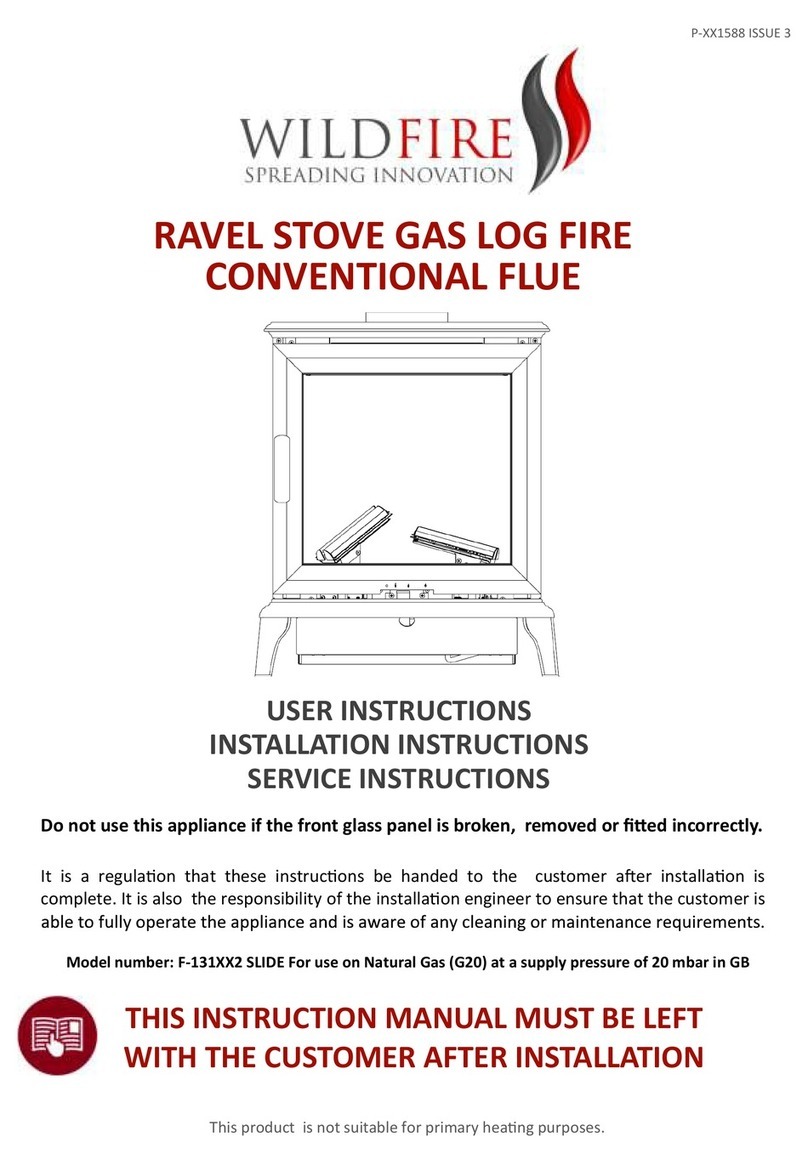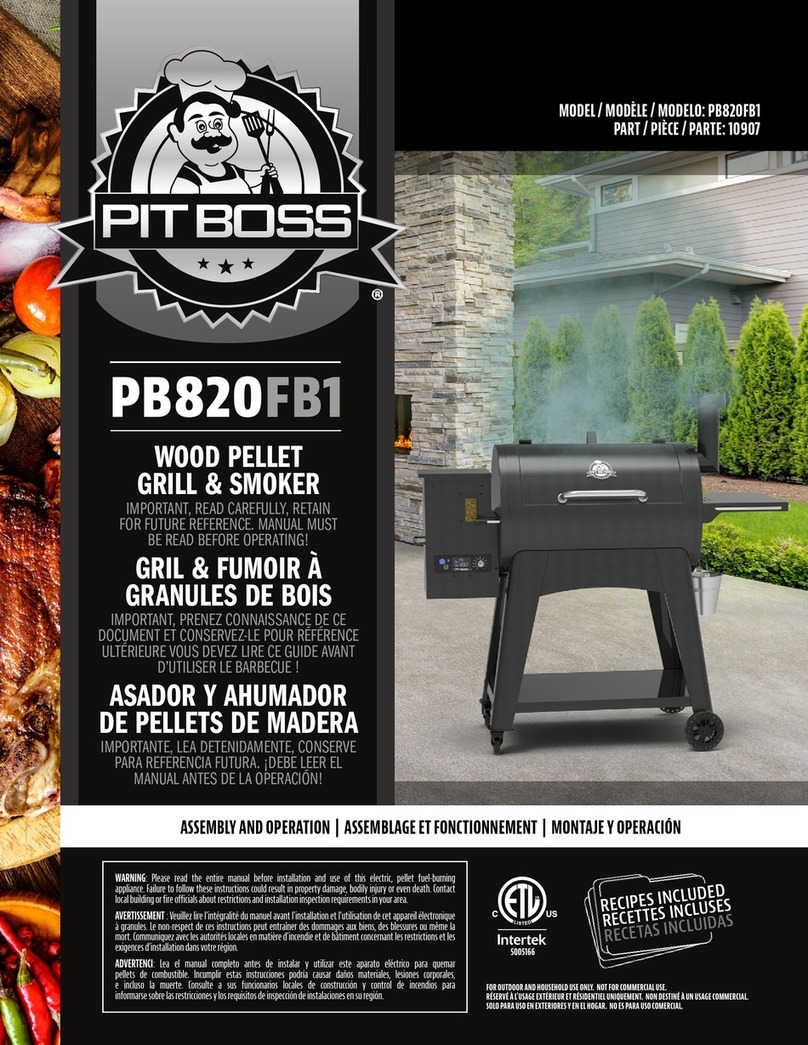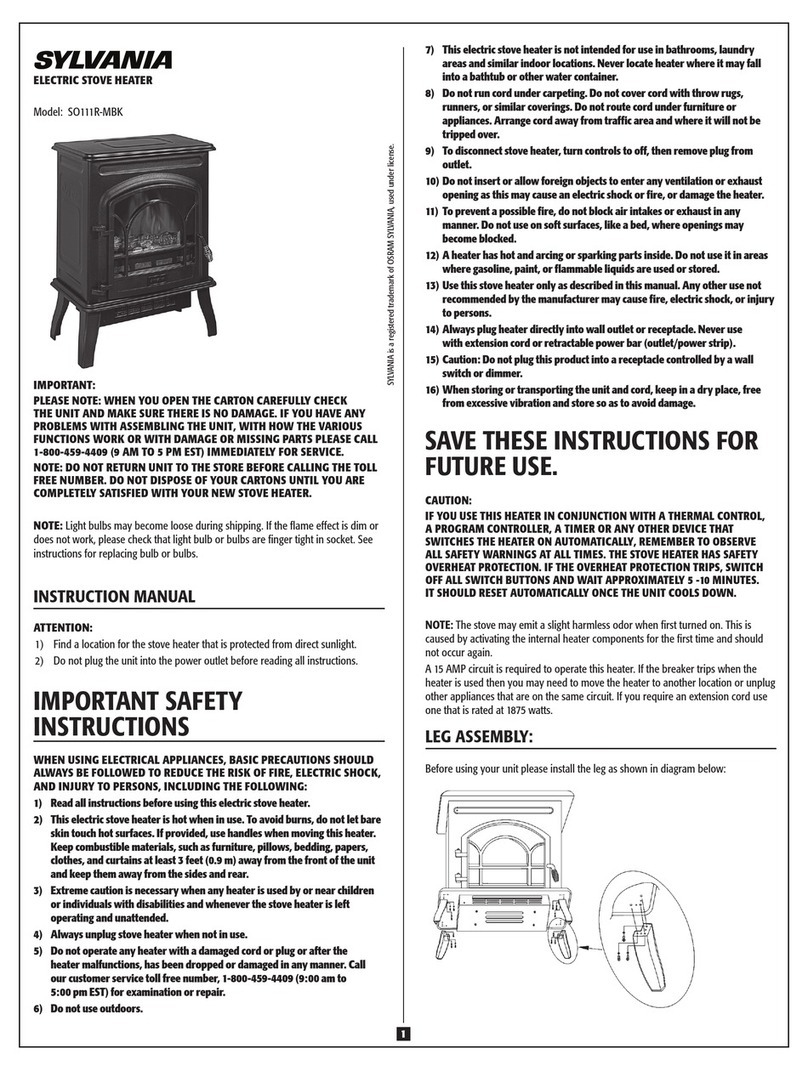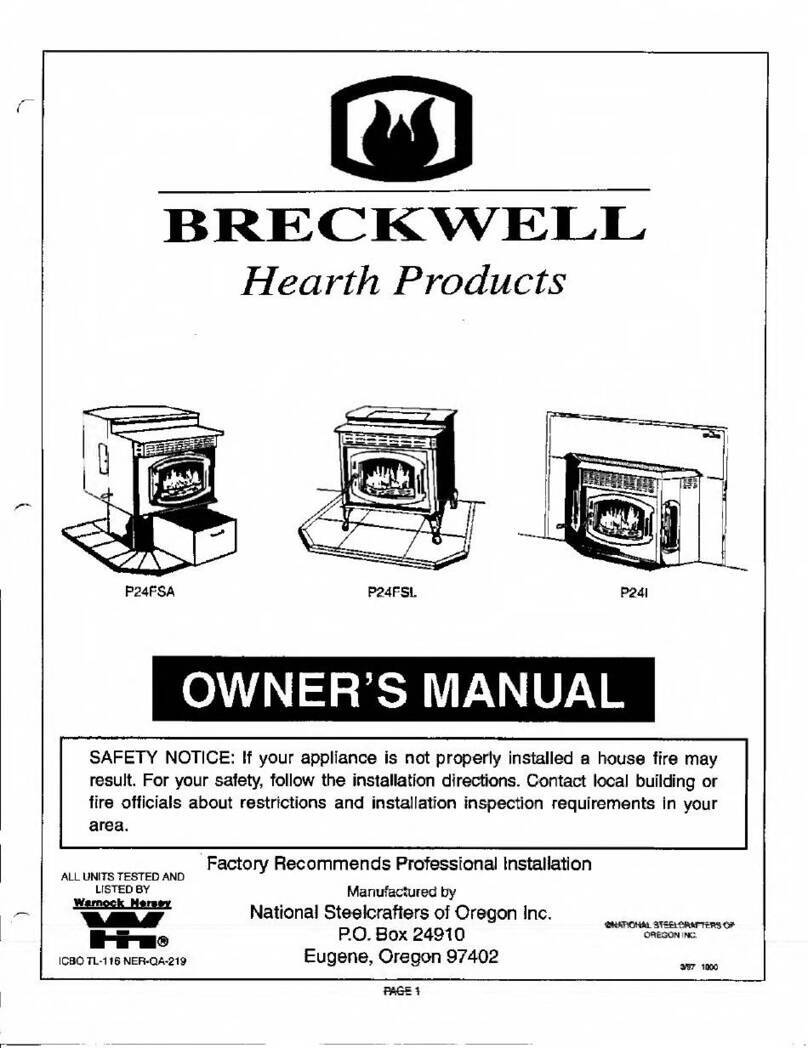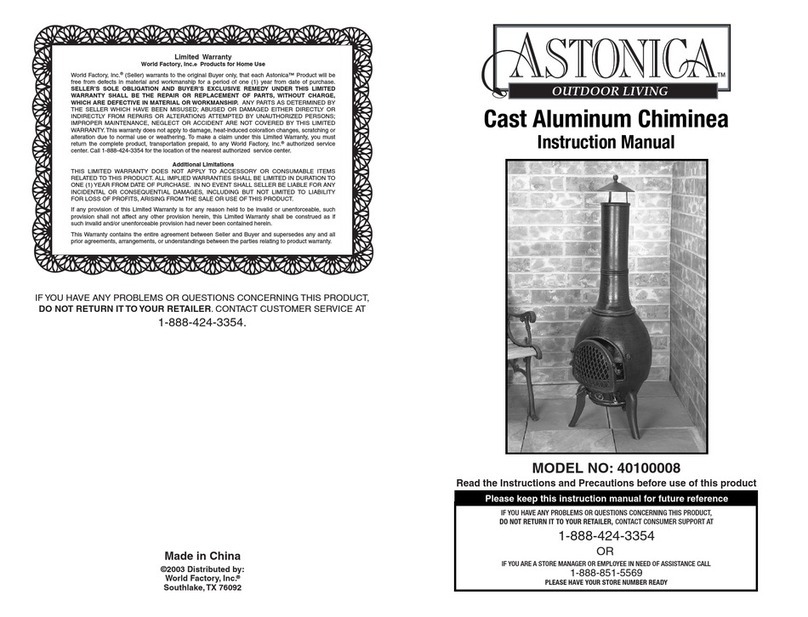
9
Troubleshooting Guide
Start Up - Hard to Light
Cause Solution
Too much air blows flame out Set damper to first notch for start-up.
Fire pot is full of partially burned corn The fire pot should never be more than 1/2 full of corn.
Remove and clean fire pot. Clean out fire pot holes and tumbler.
Use primer button to meter small amounts of corn into fire pot
during start-up.
Trying to start with corn alone Use starter bricks or wood pellets to warm stove up. Starting
stove with corn alone can be done. But, it is more difficult.
Stove set to RUN mode during start-up Change mode selector switch to START mode.
This will allow the exhaust blower to operate while the machine
is cool. Change to RUN mode after the machine warms up.
Fire Goes Out and/or Smoky Exhaust
Cause Solution
Not enough air for combustion Pull damper out until flame starts to be active. Generally, the
higher the heat setting, the further the damper needs to be pulled
out.
The flame should be blue at the bottom and yellow at the top.
Low air flow is helpful for start-up, but the flame burns dirty and
eventually goes out.
Too much air blows flame out Push damper in until flame is lazy. Then, pull damper outward
until flame starts to be active. The flame should be blue at the
bottom and yellow at the top.
Fire pot requires cleaning
Fire chamber requires cleaning
Drawer is full of ash
Remove and clean fire pot. Clean out fire pot holes and tumbler.
Try adding 1-2 handfuls of oyster shells to each hopperful of
corn. This will reduce the buildup of unburned starch that
collects on the tumbler and in the fire pot.
Pull scraper rod to clean heat exchanger tubes.
Clean side walls of fire chamber.
Pull out ash closures and push ash through holes down into
drawer. Empty ash drawer.
Corn too moist Use corn with 11-12% moisture content. Your corn supplier
should be able to furnish this information.
Exhaust piping plugged Clean exhaust pipe. Make sure exhaust outlet is not blocked.
Inlet piping plugged or inlet air contaminated Make sure inlet piping is not blocked by leaves, snow, etc.
Make sure inlet back draft preventer swings freely.
Make sure inlet piping does not draw fumes from exhaust piping.
Exhaust blower not functioning Unplug stove. Check wiring. Remove exhaust blower and clean
out.
Room Blower not functioning If the room blower is not functioning, the stove will overheat and
the high temperature limit switch will shut down the machine by
disabling the auger that feeds corn.
The room blower is disabled by a low temp switch. Therefore,
the room blower will not function when the stove is cool. It is
designed to only operate after the stove warms up.
If the room blower is not functioning after the stove warms up,
first check the low temperature switch. See electrical diagram. If
the low temperature switch seems to be functioning, check the
wiring to the blower. Lastly, the room blower would need to be
replaced.

